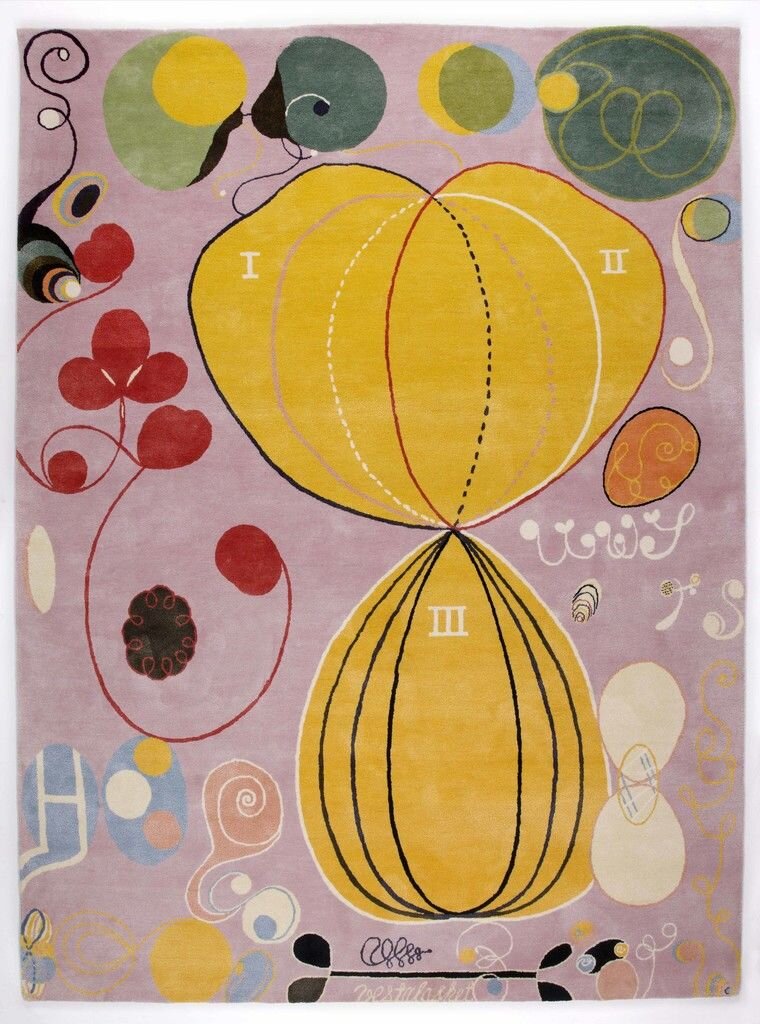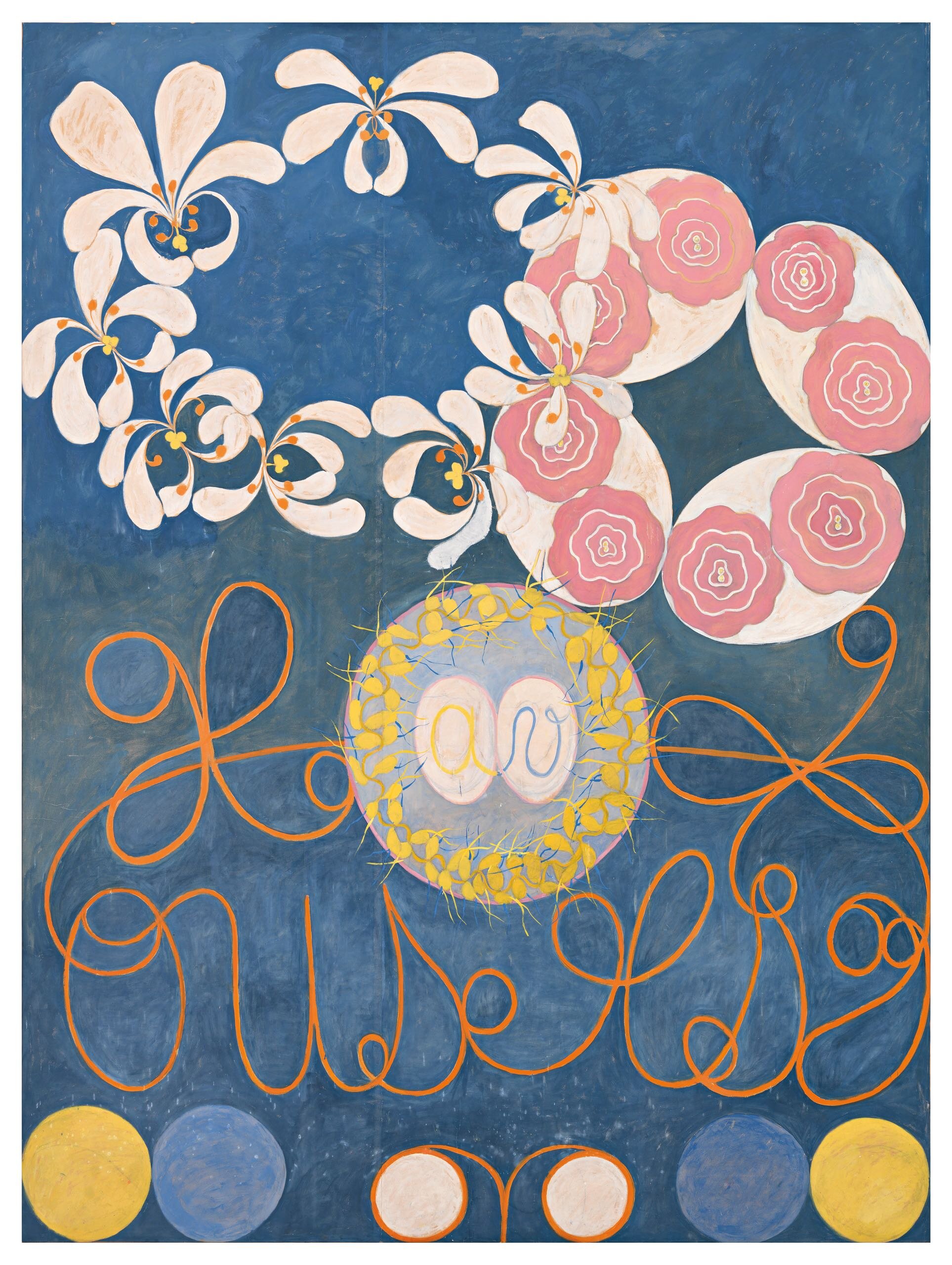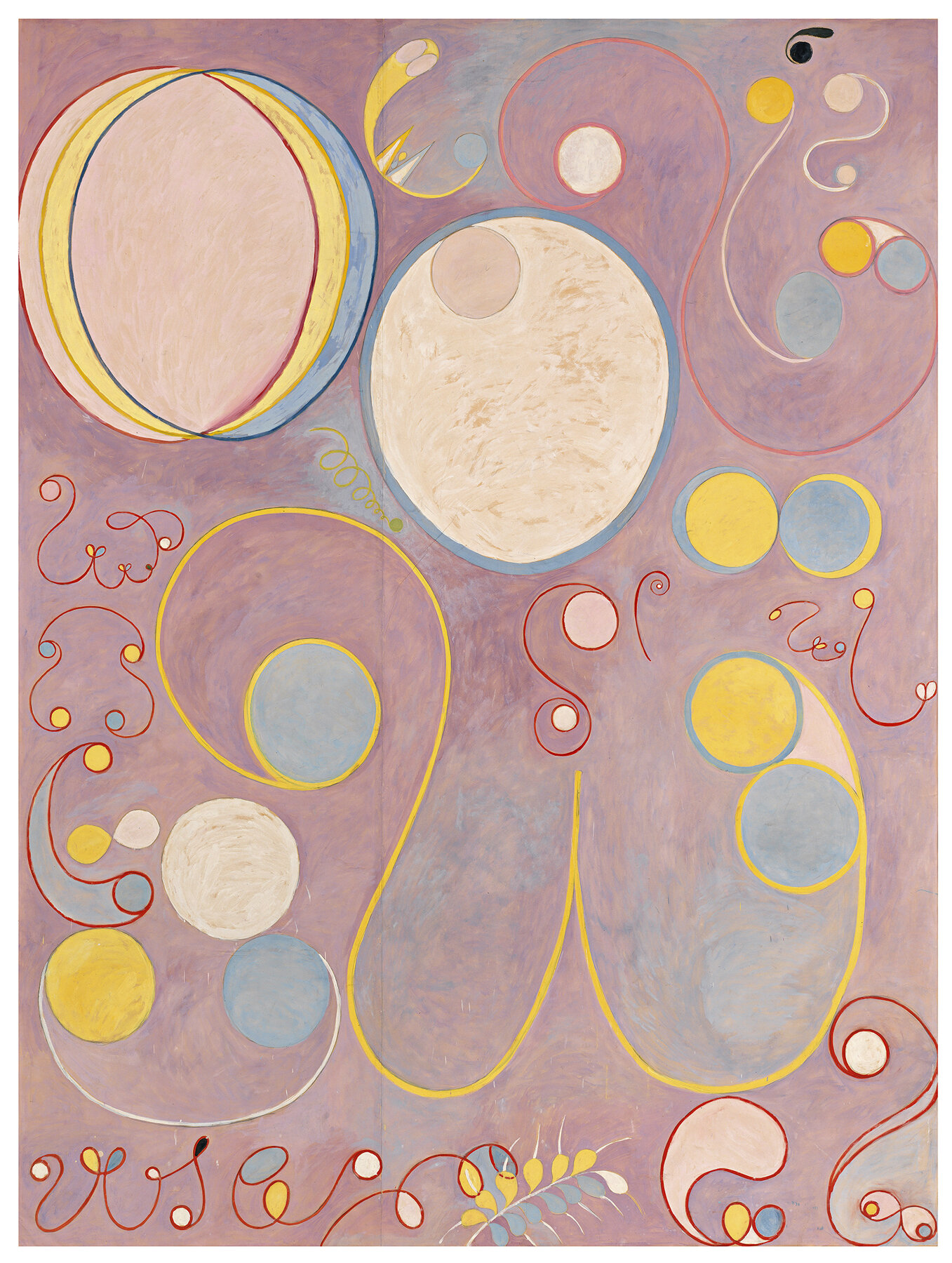Art from Within - Artistic Perception Lesson
Lesson Description:
During this lesson, students will break into groups and look at various paintings by Hilma af Klint. Students will first describe what they see, what kinds of shapes are being made, the color choices, and discuss the overall mood of the work. To record their observations, students will set up an observation capture worksheet in their sketchbooks. Students will share their observations with the class and discuss Klint’s artistic choices. Students will then write down inspiration and potential ideas for their own pieces, finally sharing with an elbow partner. As an exit ticket, students will write down one thing they might like to add to their own artwork based on Hilma af Klint’s paintings.
Grade Level:
High School - Beginning
High School - Advanced
Time Frame:
1 - 50 minute class period
Lesson Objectives/Student Learning Outcomes:
Students will be able to:
Describe the work of Hilma af Klint in detail, including style, subject matter, color, and the elements of balance, focal point, and variety in their description.
Connect the work of Hilma at Klint to their own ideas about abstract style art and how they might utilize her work as inspiration in the art assignment.
Listen and discuss the mood of Hilma af Klint’s work and derive meaning about the artwork based on their observations.
Literacy Focus:
Listening - Students will listen to one another as they take turns describing Hilma af Klint’s artwork including details about style, subject matter, color, and the elements of balance, focal point, and variety.
Speaking - Students will take turns sharing their observations of the artwork verbally with small groups and with the class.
Reading - Students will read new vocabulary words during this lesson and the notes of their peers.
Writing - Students will write their observations into a graphic organizer in their sketchbook. Students will reflect on the mood and meaning of Hilma af Klint’s work.
Art Materials:
Sketchbook
Pencil
Ruler
Colored pencils
Instructional Resources:
Chromebook
LCD Projector
HP Sprout or Docucam
Procedures:
Day Before:
Anticipatory Set:
Students will be given an article called “Slowing the Looking Down” by ____ to read and annotate for homework.
Independent Practice:
Students will read “Slowing the Looking Down” and complete annotations and a summary for homework.
Day 1:
Anticipatory Set:
Students will share their annotations and summaries of “Slowing the Looking Down” with an elbow partner.
Several groups will share their thoughts/observations.
Direct Instruction:
As a class, students will set up their observation capture worksheet in their sketchbooks.
Teacher will remind students of group discussion standards, etiquette, and goals.
Teacher will hand out photocopies of Hilma af Klint’s paintings. Each group will get a different painting to observe.
Independent Practice:
In groups, students will practice slowing the looking down, discuss their observations, and fill in their observation worksheets.
After about 15 minutes, students will come back together to share observations and notes.
Students will then write down any inspirations they have for their own artwork on the bottom of their observational worksheet and then share with an elbow partner.
Closure:
Students will complete a post-it note exit ticket, writing down one thing they found inspiring and might like to add to their own work.
For a PDF of sketchbook graphic organizer examples, click here.
Modifications for Learners’ Specific Needs:
Using Google’s dictation function, students may choose to have the article read to them and to dictate their notes into a GoogleDocument.
Students may be provided with a worksheet they can paste into their sketchbook rather than drawing their own.
Students may choose to draw their inspirations rather than writing down.
Students will be provided with vocabulary and sentence frames to prompt discussion.
Students may have additional time to finish observational worksheet as homework.
Students who finish early may observe and analyze another painting.
ELL Students:
Students will be provided with a vocabulary list with pictures related to the vocabulary of the lesson.
Students will be provided with sentence frames (resource page in their sketchbook) to utilize with their elbow partner.
Students may choose to discuss the work in their first language and work with a student or aide translator to translate into English.
Multiple Intelligences Used:
Visual-Spatial
Drawing and filling out the interactive notes.
Describing the visual characteristics of Hilma af Klint’s work.
Linguistic-Verbal
Using new vocabulary words introduced in the lesson.
Putting their thoughts about the art into words.
Interpersonal
Communicating their ideas with their partner.
Practicing good communication skills including listening and questioning.
Vocabulary:
Abstract art - art that does not attempt to represent external reality, but seeks to achieve its effect using shapes, forms, colors, and textures.
Balance - the use of artistic elements such as line, texture, color, and form in the creation of artworks in a way that renders visual stability.
Composition - composition is the placement or arrangement of the visual elements, such as figures, trees, and so on in a work of art, as distinct from the subject or the style with which it is depicted.
Focal Point - the area in the composition to which the viewer's eye is naturally drawn. It is essential to classic art, although abstract artists may deliberately create compositions without focal points. Focal points may be of any shape, size or color.
Subconscious - of or concerning the part of the mind of which one is not fully aware but which influences one's actions and feelings.
Variety - refers to the use of different qualities or instances of the visual elements. It is the opposite of repetitive or monotonous use of the elements, adds interest to the work of art.
Criteria for Assessment of Student Learning:
Did students ….
Describe the work of Hilma af Klint in detail, including style, subject matter, color, and the elements of balance, focal point, and variety in their description?
Connect the work of Hilma at Klint to their own ideas about abstract style art and how they might utilize her work as inspiration in the art assignment?
Listen and discuss the mood of Hilma af Klint’s work and derive meaning about the artwork based on their observations?
Method of Assessment:
Formative
During guided practice, teacher will stop at key intervals to assess that all students are on the right track.
During guided practice, teacher will ask students to hold up their notes and/or give a thumbs up when they’ve completed the notes and are ready to move on.
During independent practice, teacher will walk around the room checking in on group discussions and asking further questions. Teacher will also help to prompt groups who are struggling to discuss.
Summative
Exit ticket to be collected at the end of the lesson.
Notes will be checked in a sketchbook check.
National Core Arts Standards Addressed:
HS Proficient VA:Cn10.1.Ia - Document the process of developing ideas from early stages to fully elaborated ideas.
For a PDF version of this lesson, click here.


